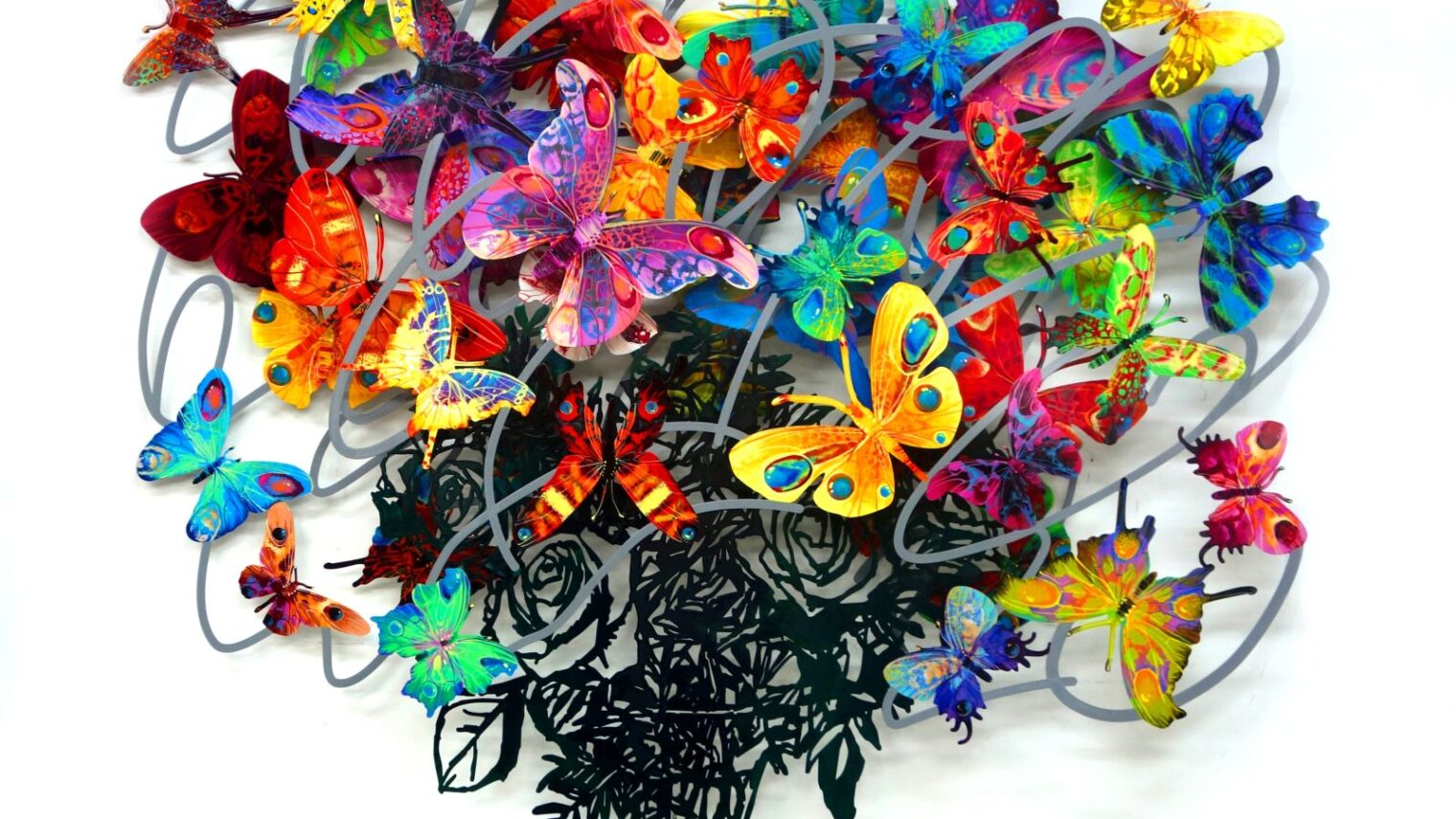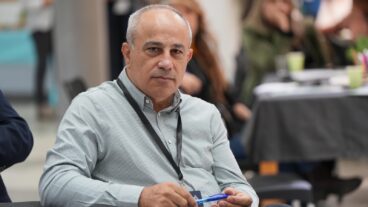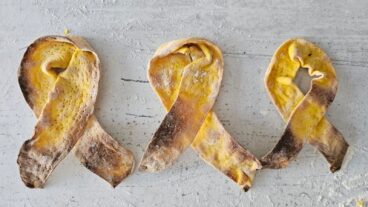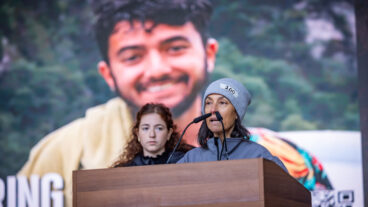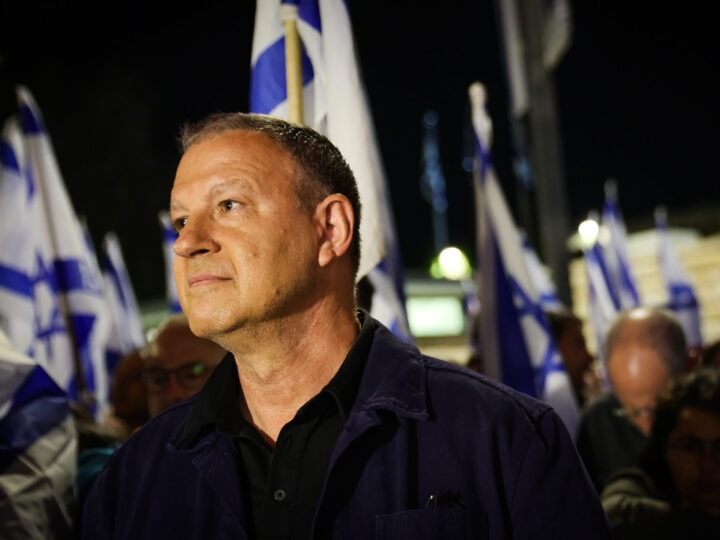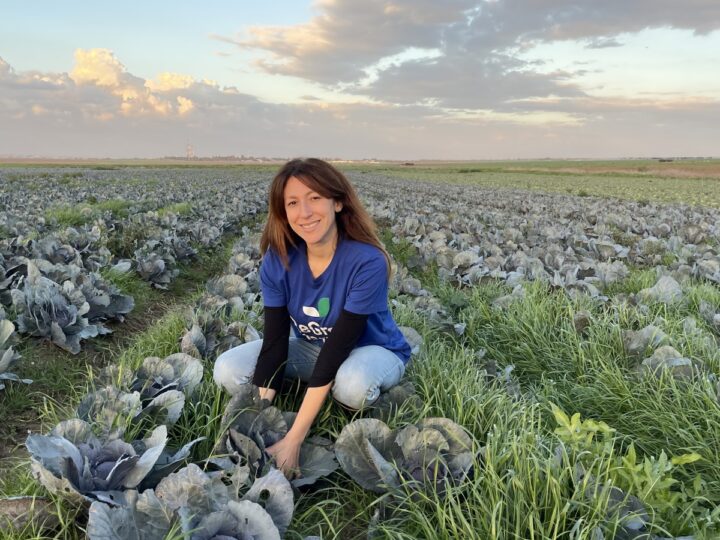Museums and galleries tend to abide by the “no touch” rule to safeguard the artworks they display.
But Israeli contemporary artist David Gerstein encourages a hands-on approach, firmly believing that his creations are for the public and not for private collectors or curators.
“My philosophy is that art should touch life. It shouldn’t be something that you see once a year when you go to a museum,” Gerstein tells ISRAEL21c at his studio in the Bet Shemesh Industrial Zone.
There’s a pop-art feel to the everyday items he depicts in his multilayered wall sculptures, outdoor sculptures, paintings, prints, drawings and designed objects.
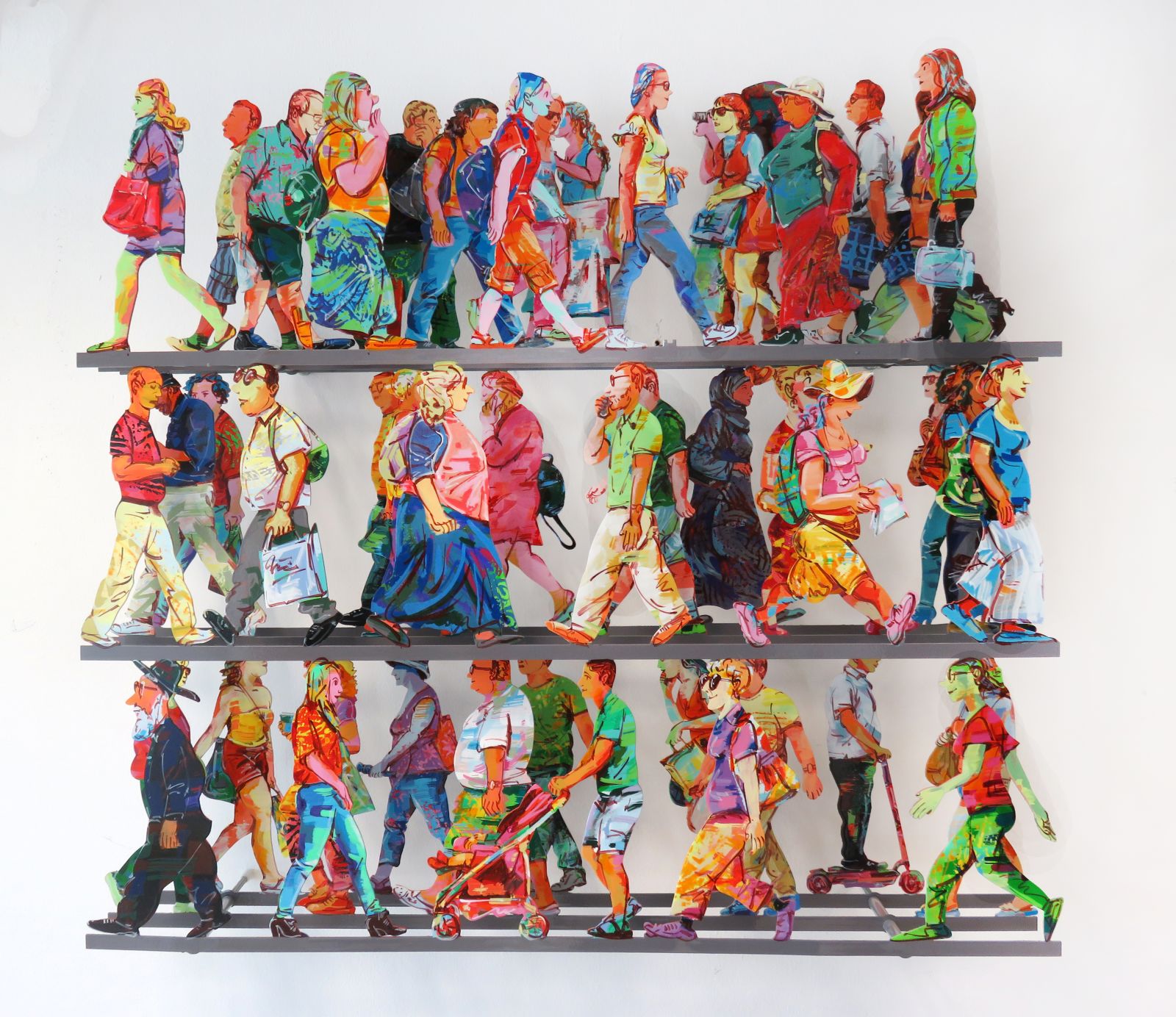
“It’s my personal pop art. I’m not following Andy Warhol but I’m using the same feeling about the colors, about the popular images,” he explains. “It’s about speaking with the audience at eye level. My work is not a riddle. Many times I go to museums and see artworks that are vague. I want people to understand what I mean.”
The subject matter for his paintings and sculptures all comes from scenes in his past. “My memory of my mother riding a bike became the Tour de France wall sculpture,” he explains. “I’m not just inventing images. They’re all based on my memories.”
Gerstein has succeeded in bringing his universal language of playfulness, humor and optimism to the public-at-large in many countries.
Among the many galleries and museums thathave exhibited his works are Ostendorff Gallery (Germany), Gallerie Quorum (Spain), Newbury Fine Art Gallery (US), Catto Gallery (UK) and Museo Naional Do Brasil (Brazil).
In Israel, his works – especially his three-dimensional outdoor sculptures – brighten up cities and towns from north to south.
“Gerstein has changed the spirit of environmental sculpture in Israel. No more the enigmatic object which arouses a feeling of splendor and distance, but an accessible object, fresh and optimistic,” wrote the late prize-winning Israeli curator Naomi Aviv.

Gerstein’s studio is a multi-roomed warehouse surrounded by gray industrial office blocks. Yet what goes on inside is anything but bleak.
Step through the gate and you’re entering a magical kingdom filled with 3D cows and flowers, butterflies and birds, and cyclists racing to nowhere. Framed paintings feature golden fish, balconies and urban scenes bursting with life.
It is no wonder that Chinese hospitals and nursing homes lately are queuing up for a dose of Gerstein happiness.
“I never thought I’d get to the Far East,” he says, noting that he is currently working on eight huge wall murals in China and an art exhibit for Beijing. And he’s been meeting with other Chinese curators interested in his work.
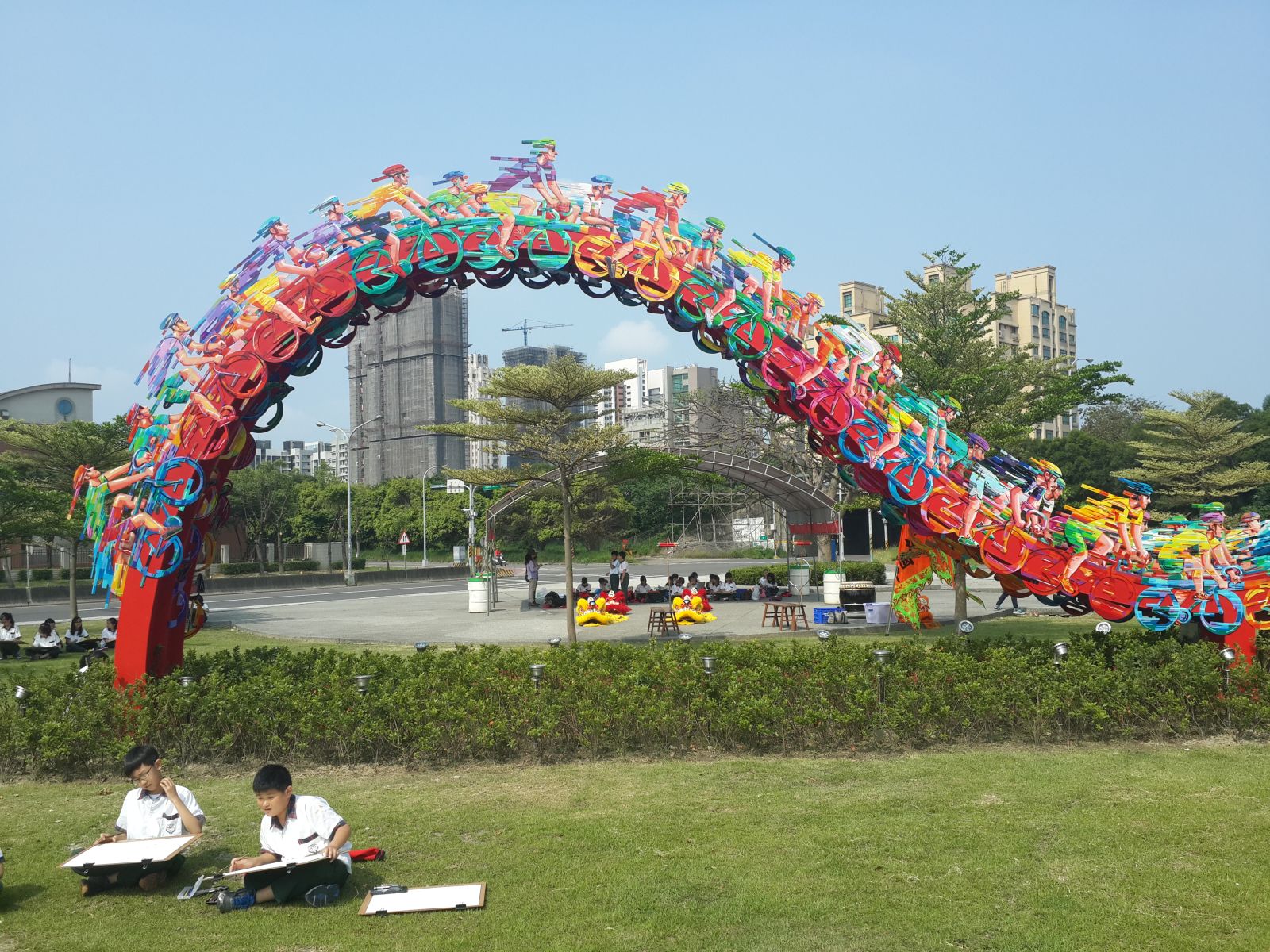
While he also recently made a large sculpture for Shaare Zedek Medical Center in Jerusalem, hospitals are hardly his only clients.
Gerstein is on the go at least a week every month, traveling with his exhibitions or meeting potential buyers.
In January, the 72-year-old widower presented Pope Francis with a wall sculpture in two layers depicting in bright colors the phrase from Psalms, “The Lord is my shepherd, I shall not want,” in Hebrew and Spanish.
“The ceremony was exciting; they had about 3,000 people from all over the world, big believers, admiring my art,” says Gerstein.
His most famous work, an 18.35-meter-high painted steel outdoor sculpture called “Momentum,” is installed in Singapore’s central business district. “It became an icon,” he says.
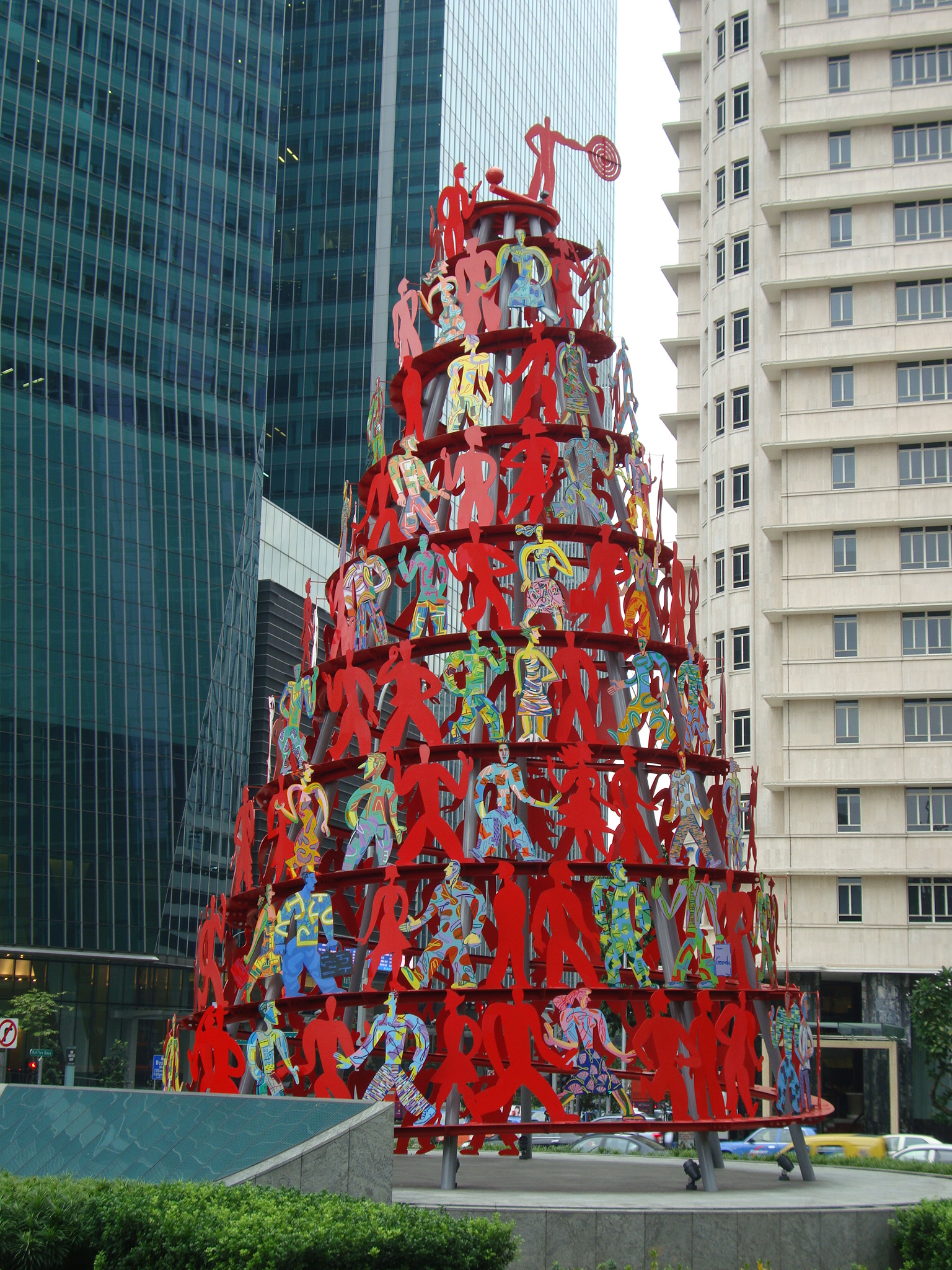
One of Israel’s best-known contemporary artists, Gerstein was born and raised in Jerusalem. At 21, he started his studies at Bezalel School of Art, the premiere art school in the country. In the 1960s, Gerstein set off to widen his art horizons in Paris at the Ecole Superieure des Beaux Arts and then in New York City’s Art Students League.
“When I returned from New York I was still very young. I immediately began teaching at Bezalel and I had to make a crucial decision for myself as an artist: Should I turn to what is popular and accepted, meaning the minimalist, conceptual approaches, or go my own way and be less popular, for the moment at least,” he wrote in a forward to his book, David Gerstein Works.
He chose to concentrate on painting. Back then, in the 1970s, his palette was monochromatic.
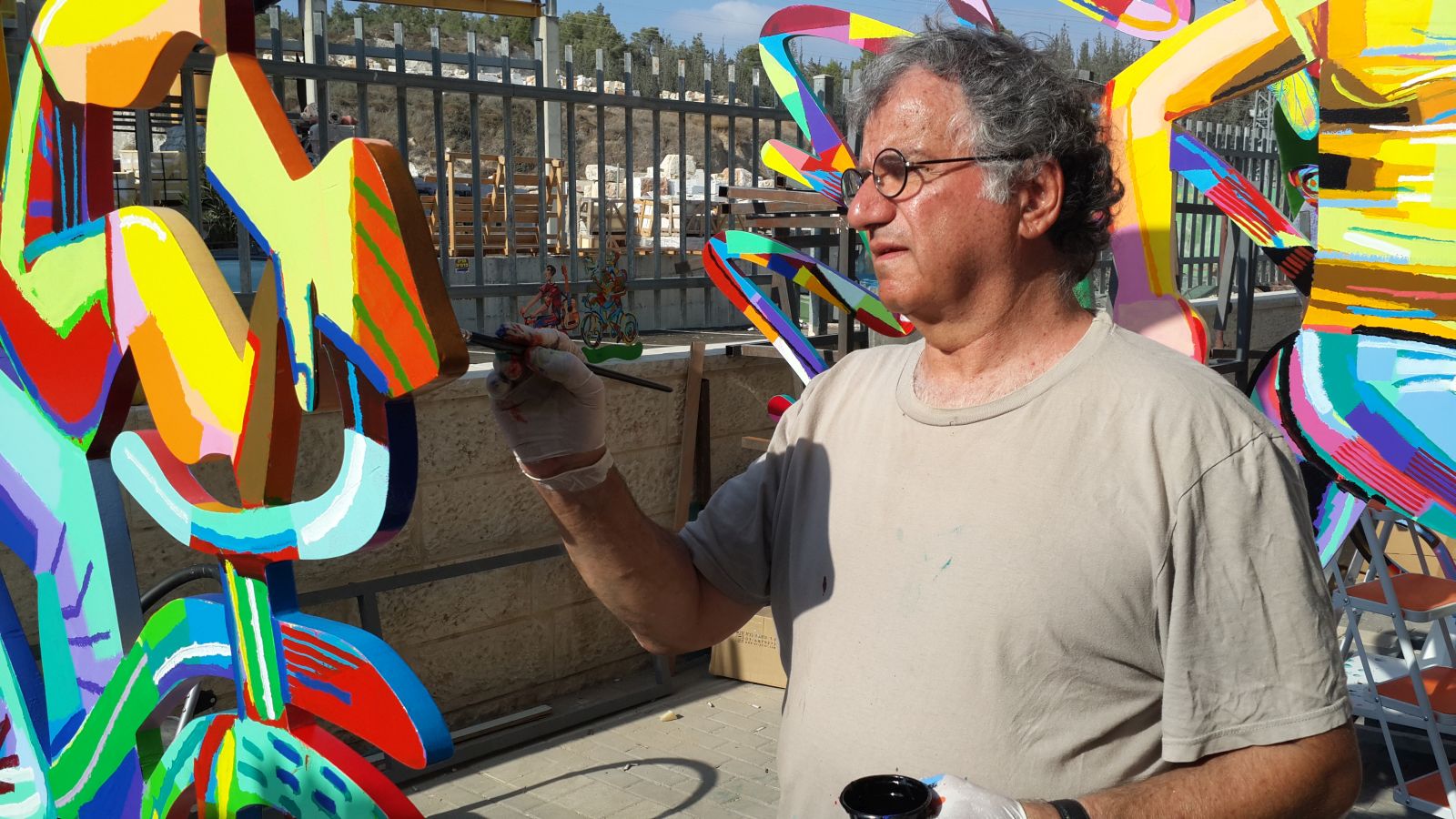
In 1980, Gerstein created his first two-dimensional sculpture. At the time, high-tech laser cutting wasn’t available so he carved an image of donkeys out of wood.
For the next 15 years, he carved and painted wooden sculptures that would eventually become his signature in the art world.
“I believed in it,” he says of the new style he created. “My family thought I became crazy. I was recognized as an artist and as a painter. They thought it was a phase that would pass.”
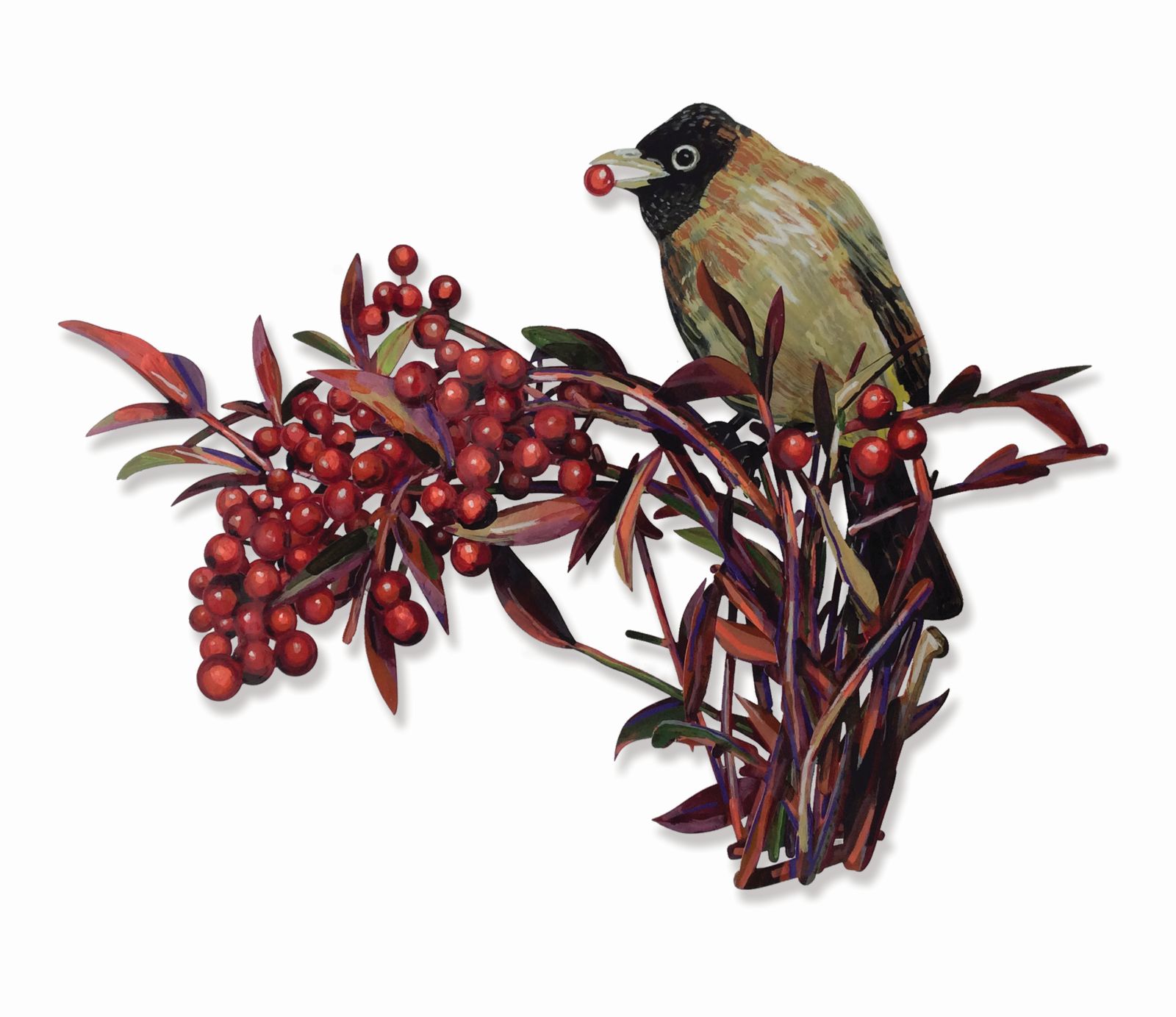
Today he uses laser technologies for steel and aluminum cutouts. And the bright colors came about thanks to the need for industrial paint to cover the metal.
“I love pure colors and industrial colors,” he says. “My painting also changed. The bright colors became part of my works.”
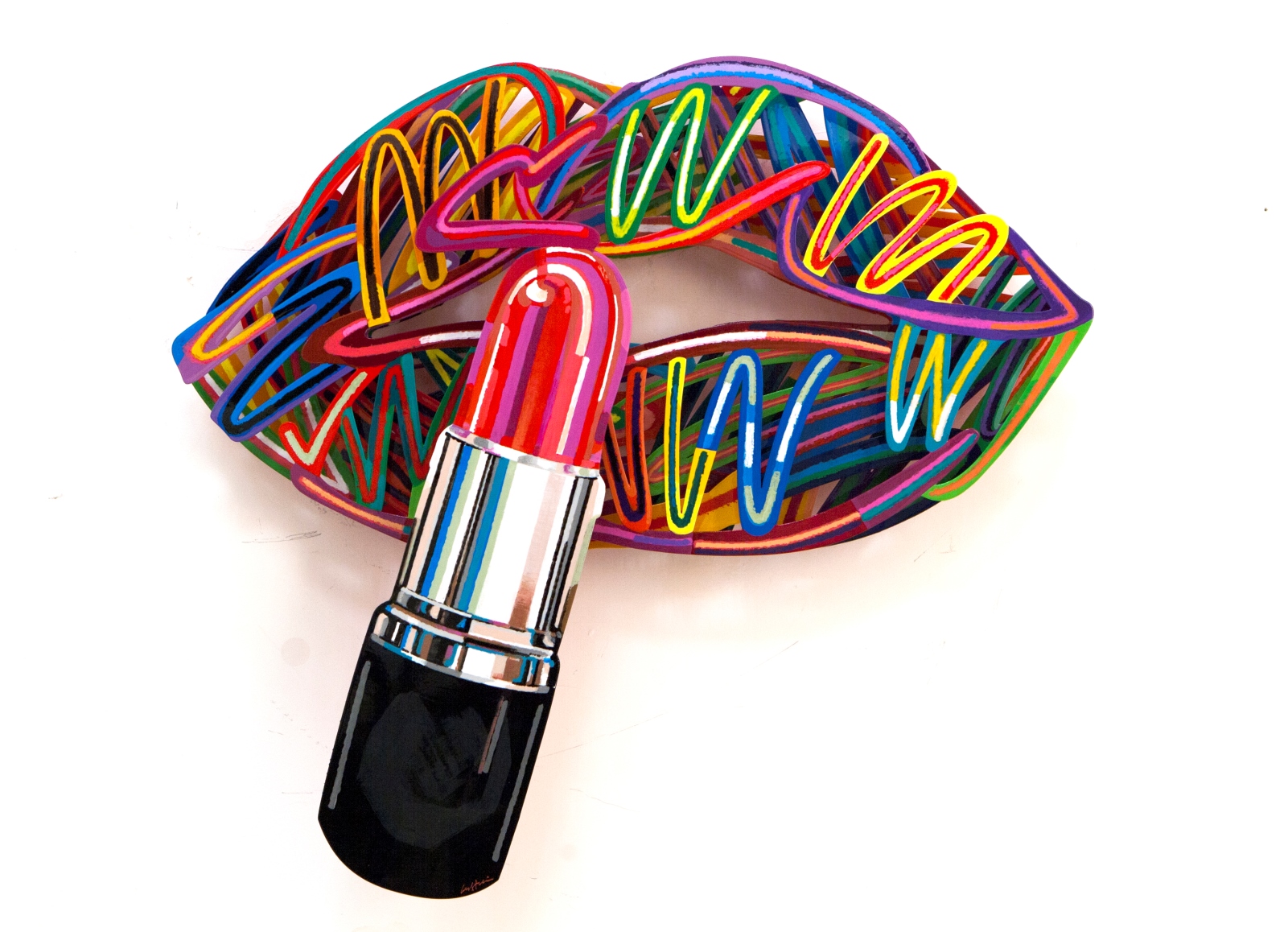
The public loves his happy palette.
In fact, he started creating small objects – stamped with the Gerstein Design logo – because people kept telling him that they couldn’t afford his works. He continues to add to this collection despite curators telling him that he would “kill his market.”
His limited-edition art is hand-painted whereas the images on his unlimited smaller objects are printed. His works range in price from $100 to $1.5 million. Design shops in Israel and around the world sell his smaller sculptures, and his designs can be found on porcelain dishes, clocks, placemats, jewelry boxes and more.
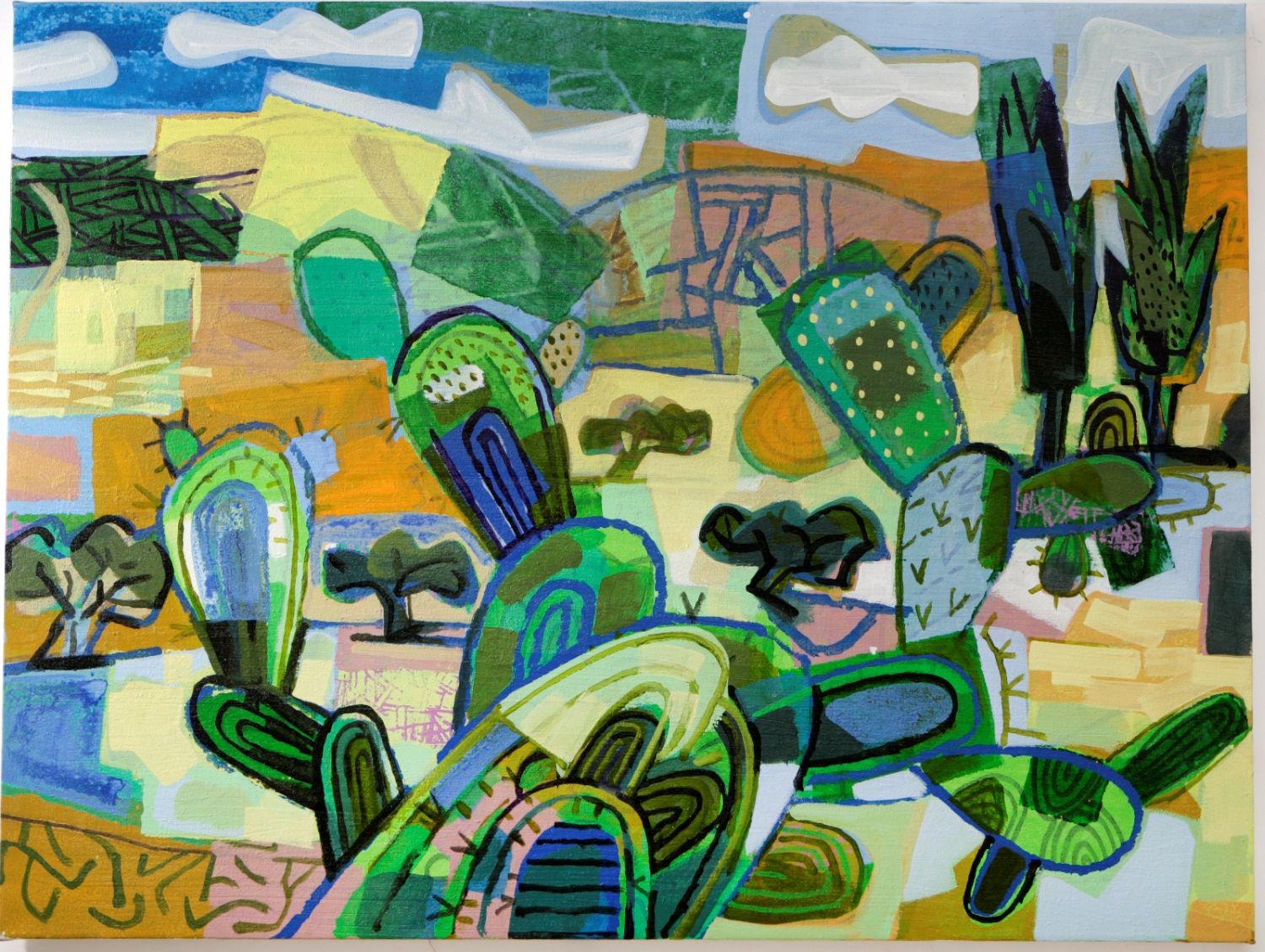
“There’s a saying, ‘A car for every worker.’ I say, ‘Art for everyone.’I think that art should serve; it’s not something above us. It’s something that we live with,” Gerstein tells ISRAEL21c.
“Imagine Van Gogh seeing a tie with his ‘Starry Night’ painting on it. I’m sure he would be so happy. At the time, no one looked at his works. And now, there are aprons with his images, placemats with his images. I’m very happy when companies approach me and say they want to use my images for something,” says the artist, who is one of the most down-to-earth, friendly people you’d ever want to meet.
But copycats – of which there are many, especially in Israel – irk him intensely.
“It makes me sick. A lot of people say I should be happy; not many artists are being copied. But many times, I’m so upset with the quality of the copies. Also, I’m afraid that people will stop seeing the difference or stop seeing who is the original.”
New ideas and creations
Gerstein credits his wife, who passed away three years ago, with helping him stay grounded and bringing the artworks of others to the walls of their Jerusalem home.
In his office, balanced precariously on his printer, is an original Menashe Kadishman painting with a personal note on the back of the canvas.
Gerstein enjoys visiting schools in Israel and giving talks about Israeli art. He says he always finds it amusing that children ask to take selfies with him.
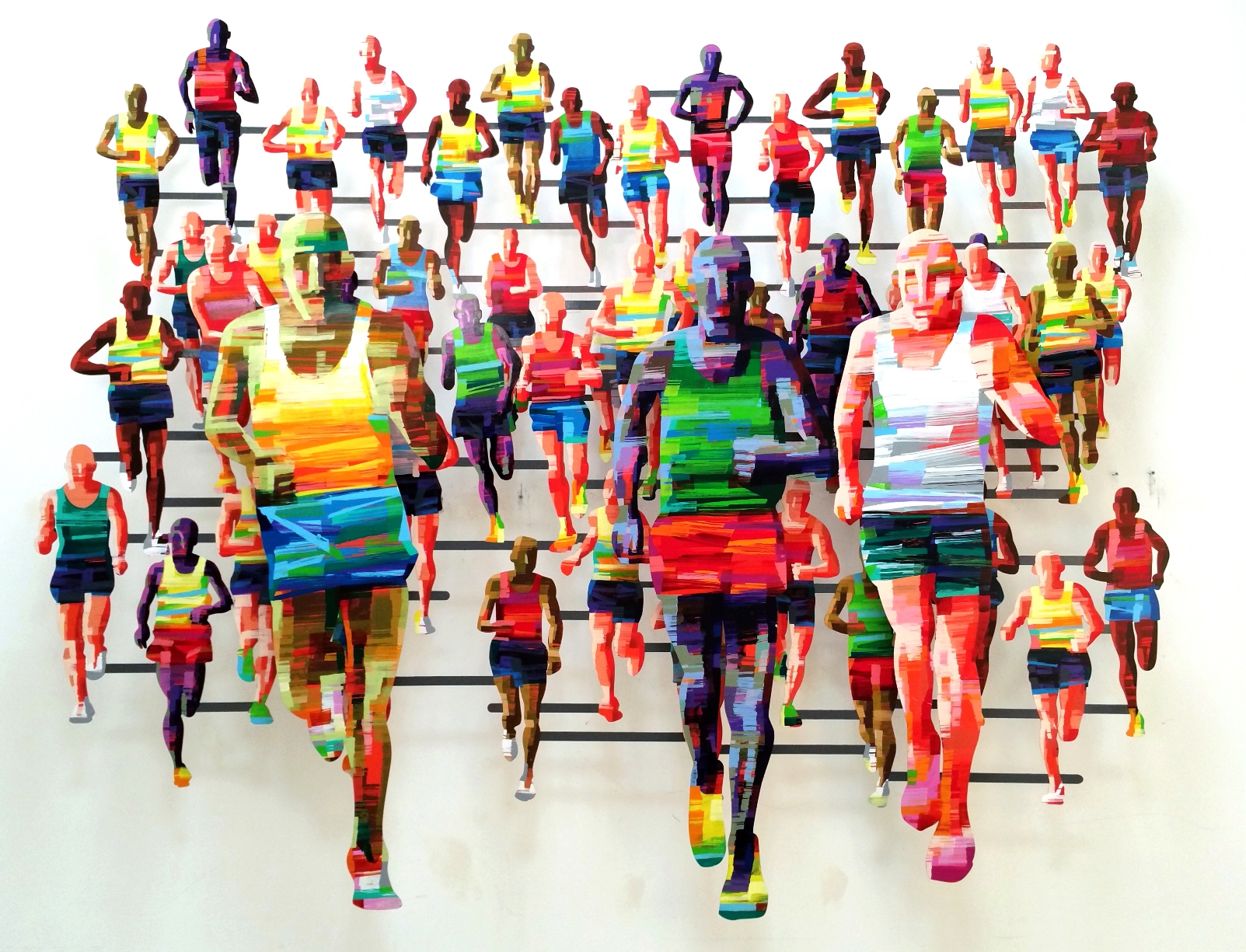
And he gets even more animated when he talks about new public installations, like the Ruby Shapira sculpture – dedicated to the late president of the Hapoel Haifa soccer team – now being installed in Haifa.
“My best works are outdoors because it’s in the public domain. I like people to experience it when they’re walking, driving, being part of the public. That gives me the most pleasure,” he says. “It talks with the environment, with the surrounding architecture. It’s my great experience, doing public works.”
Which of his works is his favorite? “My most favorite is the one I’m going to do,” Gerstein replies.“My mind is always thinking about the next creation.”
For more information, click here.




